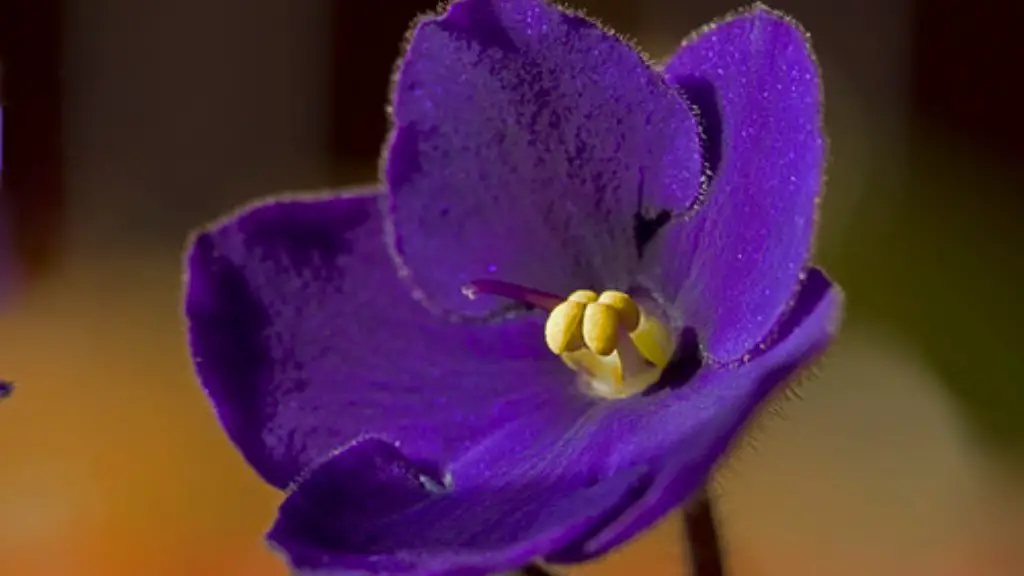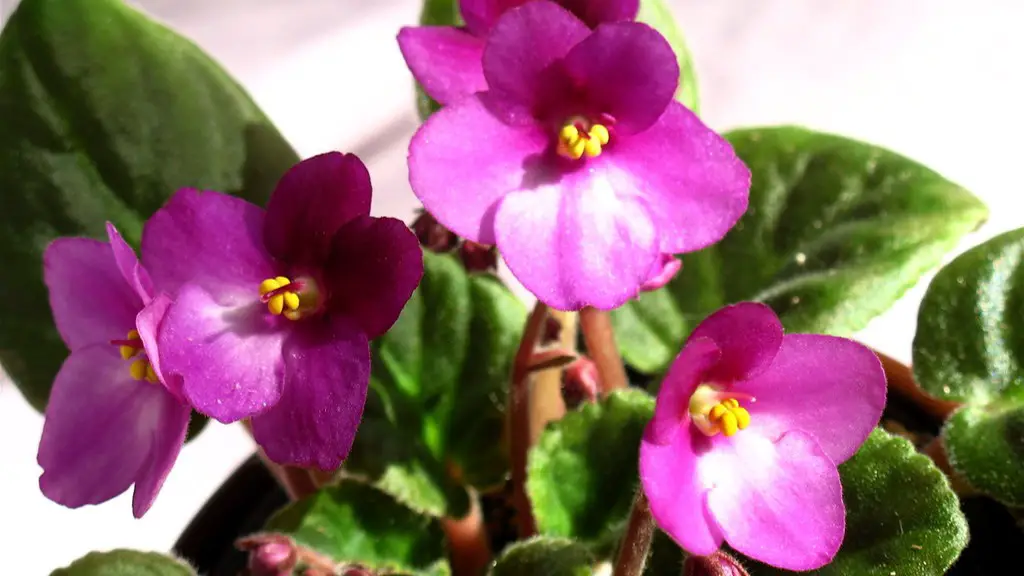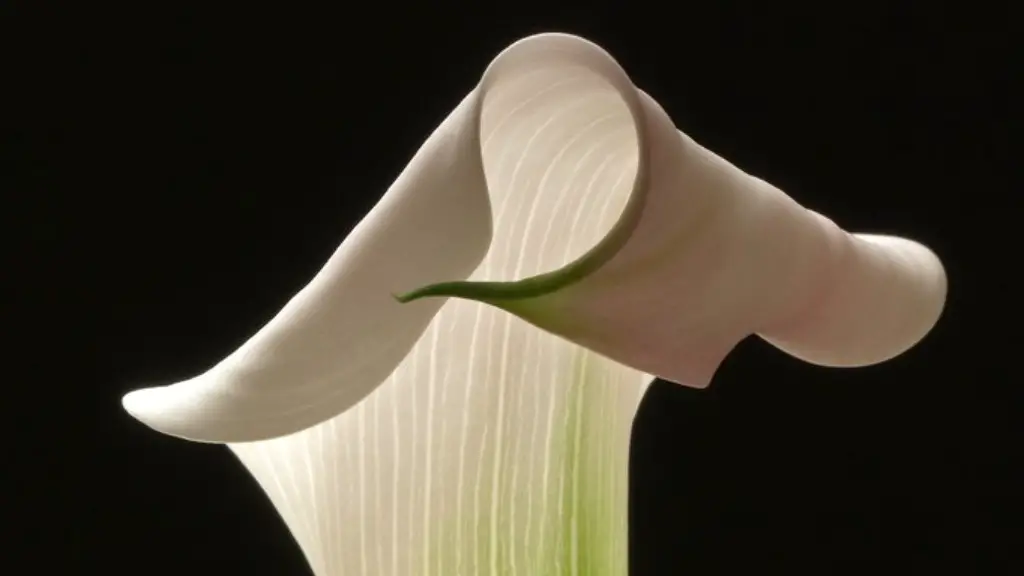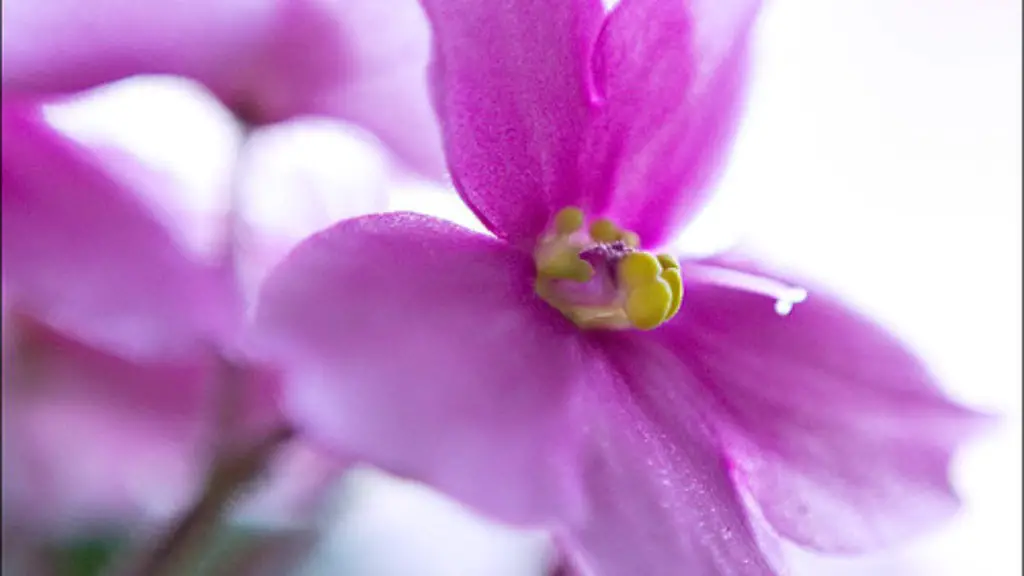Looking after African violets is not as difficult as one might think. With a little knowledge and care, these beautiful plants can thrive indoors. Here are some tips on how to take care of African violets:
Fill a bowl with lukewarm water. Add a squirt of dishwashing liquid. Use a fork or your fingers to lightly agitate the water and create suds.
Place your violet in the bowl. Make sure that the entire root ball is submerged in the water. Allow the plant to soak for 15 minutes.
Drain the bowl and refill it with clean water. Swish the plant around to remove any soap residue. Drain the bowl again.
Fill a pot with african violet potting mix. Water the mix until it is evenly moist but not soggy.
Use your fingers to make a hole in the center of the pot. Gently loosen the roots of your plant and place it in the hole. Firm the mix around the plant.
Water the plant until the potting mix is moist. Place the pot in a location that receives bright, indirect light.
How often do you water an African violet?
A wicking system is a great way to make sure your African violets are never over watered. The way it works is you place a wick in the bottom of the pot and fill the pot with water. The water will then travel up the wick and into the soil, giving the plant the moisture it needs.
If you want your plants to have the best color and blooms, grow them in bright, indirect light. A plant stand three feet away from a west- or south-facing window is an ideal location. Plants will still grow when situated right beside north- or east-facing windows, but leaves will be thin and spindly, and plants less likely to bloom.
How do I get my African violet to bloom again
If your African violet isn’t blooming, don’t despair! There are a few simple things you can do to encourage it to bloom again.
First, make sure it is getting enough light. African violets need at least 12 hours of bright, indirect light every day. If it’s not getting enough light, it won’t bloom.
Second, turn up the humidity. African violets love humid conditions. You can increase the humidity around your plant by placing it on a tray of pebbles and water, or by using a humidifier.
Third, replenish essential nutrients. African violets need to be fertilized every couple of weeks with a fertilizer specially formulated for them. This will help them bloom.
Fourth, keep it pleasant. African violets like moderate temperatures and protection from drafts. Make sure your plant is in a spot that meets these conditions and it will be more likely to bloom.
Fifth, choose the right soil. African violets need a light, well-draining soil. If your soil is too heavy or doesn’t drain well, your plant will have a hard time blooming.
Sixth, protect from pests and disease. African vio
It is important to water African violets carefully so that the crown of the plant does not become saturated and rot. Do not mist the foliage, as this can cause permanent leaf spotting. Use room temperature water.
Can you use tap water for African violets?
In most locations, tap water will be fine for African violets. However, the quality of tap water can vary, and chlorine levels may fluctuate, depending on the season. In some areas, tap water may have high amounts of chlorine, chloramines, or dissolved solids. All these things may adversely affect your African violets.
It is important to keep the soil moist to encourage blooming, but allow the soil around the roots to dry out before watering. The best way to water from the bottom is with room temperature water by placing the plastic grower’s pot in water, and allowing the plant to absorb the water (not more than 30 minutes).
Is it OK to touch African violet leaves?
Brushing leaves of african violets is not recommended because repeated brushing can decrease plant quality and size.
Yes, coffee grounds are good for African violets. They are slightly acidic and contain nitrogen, which helps plants grow healthy foliage. Occasionally sprinkling used coffee grounds on top of your African violet potting soil can be good for the plant.
How long do African violets live
African violets are typically repotted every one to three years, depending on the size of the pot and the plant. “The rule of thumb is to repot when the roots start to come out of the bottom of the pot,” says McEnaney.
Wild violets are a beautiful addition to any garden or landscape but can be difficult to control due to their aggressive nature. If you are looking to add wild violets to your garden, it is important to be aware of their tendencies and be prepared to take steps to manage their growth. With a little care and attention, you can enjoy the beauty of wild violets without them taking over your garden!
When should I repot my African violet?
It is generally recommended that African violets be repotted with fresh potting soil at least twice a year, and more often if the plant becomes rootbound. Rootbound plants are those whose roots have outgrown their current pot to the extent that they are growing out and around the rootball.
Under the right conditions, African violets can bloom nearly year-round. Each bloom lasts for about 2-3 weeks.
Do African violets need to be in a window
If you’re looking to grow African violets, you’ll need to make sure they have indirect sunlight. Direct sunlight can actually burn the leaves of the plant. North- and east-facing windows are typically best for African violets. You’ll also want to keep plants away from cold glass and rotate the pot once a week to ensure all leaves receive light. During winter months, you can extend daylight by placing African violets under a grow light.
The key elements to potting, light, water, and temperature for African violets are different than for most houseplants. African violets need well-drained soil that is moist but not soggy. They also prefer bright, indirect light and moderate temperatures. Water African violets when the soil is dry to the touch and be sure to not overwater them. With proper care, African violets can be happy, long-lived plants.
What do African violets symbolize?
African violets are a symbol of devotion, commitment, and faithfulness. No matter what the cause, these flowers represent these qualities. They are often given as a gift to show how much someone cares for another person.
When watering your African Violet, it is important to aerate the roots and never let them sit in soggy conditions. The best way to water them is from the bottom, so that they can soak up the water over a period of an hour or so. African Violets prefer warmer water, around 70 degrees.
Warp Up
To look after your African violets, water them regularly and fertilize them every two to four weeks. Be sure to use a light hand with the fertilizer, as too much can harm the plants. In addition, African violets need bright, indirect light and should be moved around occasionally to ensure they’re getting enough light from all sides.
There are a few simple steps to take when it comes to looking after African violets. Watering them regularly, making sure they have enough light, and keeping them in a humid environment are all important things to remember. Additionally, be sure to fertilize them every few weeks and check for pests often. With a little bit of care, African violets can thrive and provide beautiful blooms for years to come.




